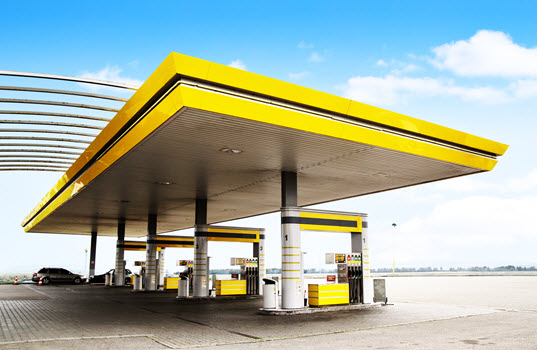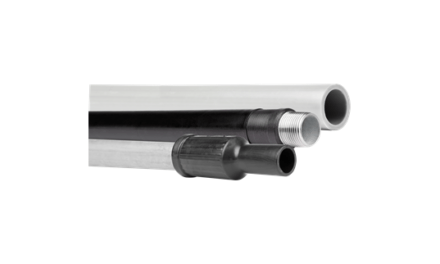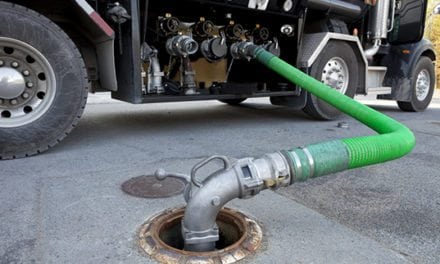By David Wilkinson
The few minutes that consumers spend at the fuel pump can make or break a fuel retailers’ revenue goals. Fuel retailers can let customers stand around aimlessly, only able to engage with a few haphazardly placed static ads and the gallon ticker. Or, retailers can provide a unified and engaging forecourt customer experience that will cement the store as a go-to destination and generate more revenue for the merchant.
Thankfully, there are plenty of ways that fuel retailers can enhance their forecourts for today’s digitally-savvy consumer—think contactless payments via mobile app, personalized offers and digital content at the pump, store-to-vehicle food and drink delivery and more—to deliver an improved, safe and personalized customer experience.
While fuel retailers have struggled with gas sales and commuter traffic during the pandemic, the number of cars on the road will likely increase over the coming summer vacation months. Half of Americans are planning their first 2021 trip between March and August, with 63% planning to travel by car, according to PaymentsSource.
Here are some tips for ways fuel retailers can revamp their forecourt experience strategy in 2021 using technology, and how to maximize its implementation to boost customer loyalty and revenue.
Make Touchless Payments Possible
Contactless and touchless payments are unquestionably the new table stakes for the entire retail industry. The National Retail Federation reported that no-touch payments increased for 69% of retailers in just the first half of 2020. And 57% of consumers said they will likely continue to make digital payments at stores even after the pandemic.
For in-store payments, retailers worldwide have stepped up their game with more contactless self-checkout options, and many fuel pumps today already have some contactless self-check capabilities. Consumers do not have to interact with an employee to pay for their fuel, and that is good practice in today’s cautious and socially distanced environment.
But there is still the issue of consumers needing to touch the payment terminal, a surface area that can be touched by hundreds of hands each day. That could be a cause for concern for consumers even in post-pandemic times.
Savvy fuel retailers can solve this issue using a variety of payments technologies aimed at decreasing the number of times customers have to touch the payment pad or screen.
One payments solution is tap-to-pay technology. Instead of sliding their credit card into a chip reader where hundreds of other customers have done the same, customers with contactless-enabled cards can wave their card a couple inches over the terminal to pay. This is already a popular technology, with almost a third of Americans now preferring contactless-enabled cards because of safety and convenience concerns.
The term “tap-to-pay” can also apply to mobile wallet payments. Customers who have added their card information to Apple Pay, Google Pay or other mobile wallet apps can wave their phone over the terminal to pay for their fuel in much the same way they would wave a contactless-enabled card.
Fuel retailers can also upgrade their pumps to support mobile apps that customers can use to unlock fuel pumps and pay for gas without ever touching the payments terminal.
Users with an account in the app can then select the pump in the app by entering a PIN or scanning a QR code and authorize the transaction. Then they have 30-45 seconds to begin fueling. At the end of the purchase, the record is available in the app, and no separate receipt is needed.
Digital Advertising
Outdoor pumps are also ideal displays for digital advertisements to customers. These ads can tie into the retailer’s loyalty program to show personalized ads when loyalty members are at the pump, reminding them about their favorite food and drink, the points they can earn and encourage them to buy more than just fuel.
Fuel retailers can also easily change the ads with the weather, the time of day, local product availability and more. For example, pump screens could promote breakfast food and hot drinks like cocoa and coffee on cold mornings and sandwiches and refreshing beverages as the temperatures rise. Additionally, according to NACS, the 39% of convenience retailers who added cleaning and toiletry items to their inventory in 2020 could advertise that availability, especially when other stores in the area might be running low.
Add Foodservice Ordering (and Delivery) at the Pump
For today’s convenience- and safety-minded consumers, order-at-the-pump foodservice capabilities have great appeal, allowing them to stay comfortably by their car and have refreshing food and drinks delivered.
Many convenience and fuel retailers already plan to offer more meal solutions in the store in 2021, according to NACS, with 58% reporting an emphasis on prepared foodservice and 51% on fresh prepared meals. Fuel retailers can increase their foodservice revenue by providing pump ordering capabilities for consumers hesitant or unwilling to trek indoors.
To make this a reality, more and more pump vendors are building foodservice ordering into their hardware so that customers never need to enter the store. Instead, they can choose from a list of in-store items from their pump screen. A store employee can then gather and deliver the ordered items to the waiting car, similar to drive-thru service at a quick-service restaurant or curbside delivery for groceries.
Forecourt technology has and will continue to improve the customer experience. Whether it’s touchless technology providing more convenient and safe payment options, customizable digital pump promotions or store-to-pump foodservice delivery, fuel retailers who revamp their forecourt technology will be sure to improve the customer experience. They will boost customer loyalty and, ultimately, increase their bottom line as they become their customers’ go-to fueling destination.
 As president and general manager for retail, Wilkinson is responsible for creating and executing NCR’s overall vision and strategy for the Retail industry. He is focused on helping retailers thrive and deliver on their brand promise in a digital first world by leveraging NCR’s unique software, hardware and services capabilities that run the entire operation from back office to front end.
As president and general manager for retail, Wilkinson is responsible for creating and executing NCR’s overall vision and strategy for the Retail industry. He is focused on helping retailers thrive and deliver on their brand promise in a digital first world by leveraging NCR’s unique software, hardware and services capabilities that run the entire operation from back office to front end.




